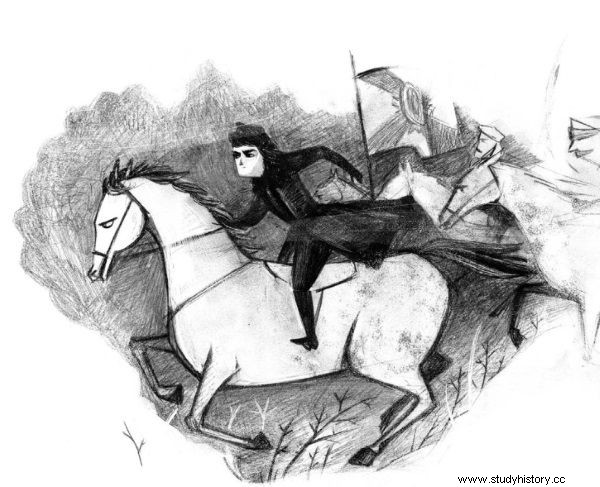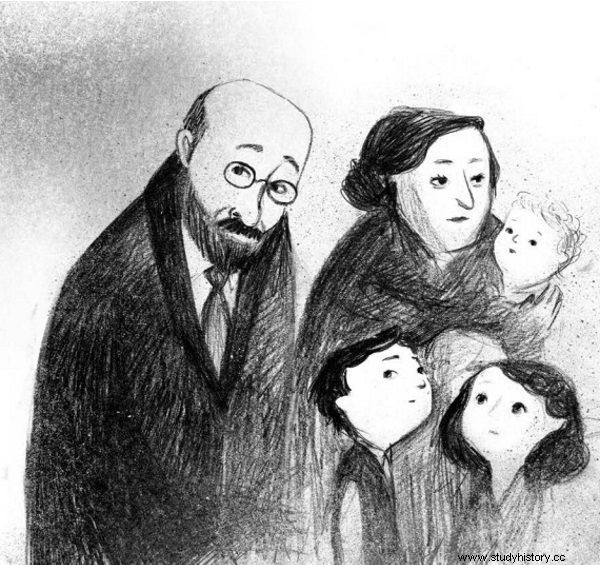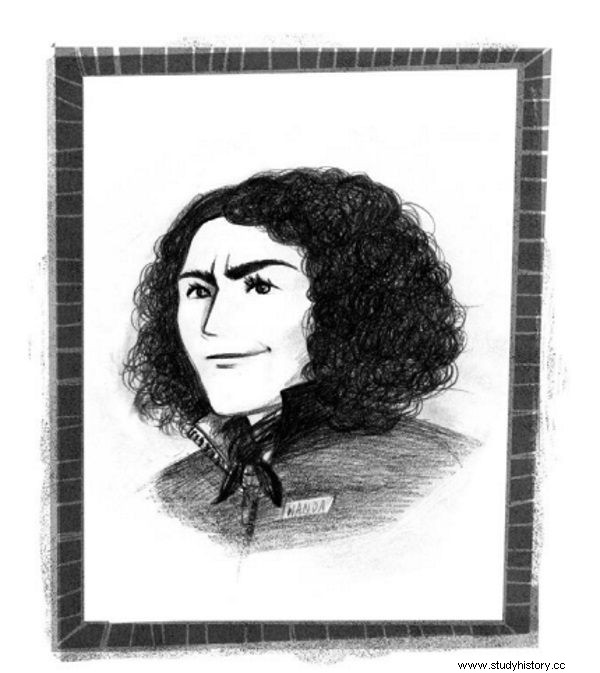They fought for Poland equally, side by side with men. They reached the highest peaks and set world records. They proved that you don't need testosterone to perform the most difficult jobs. And for the big cause they were even ready to give their lives.
4. Henryk Pustowójtówna. Girl from the Uprising
Henryka Pustowójtówna was born on July 26, 1838 as the daughter of a Polish noblewoman and a Russian officer. Having been born into a mixed family, she felt Polish, while her older brother zealously persecuted Poles after he followed in his father's footsteps and chose a career in the tsarist army. Henryka was raised as a Polish patriot by her maternal grandmother. From a young age, the girl got into trouble, among others because she sang patriotic songs in public or laid flowers at the Lublin Union monument.
For this reason, she was even arrested by the tsarist police and was to be imprisoned in an Orthodox monastery in the heart of Russia , however, she fell ill and instead… she was sent to Zhytomyr to see her mother. Before the Russian authorities took any further steps against the rebellious girl, this escaped with two of her colleagues using false documents . Despite the raid, she managed to escape and when the January Uprising broke out, she did not even think twice - she immediately joined the fighters.

Henryk Pustowojtówna. The illustration comes from the book by Anna Dziewit-Meller, “Ladies, girls, girls. History in a skirt ”(Krakow 2017).
Anna Dziewitt-Meller in her book for children about Polish heroines ( "Ladies, girls, girls. History in a skirt" ) she turns Henryka Pustowójtówny into a narrator and tells her about the uprising and how the fighters treated the girl in their ranks:
The conditions in the mountains were rather not for ladies. Sometimes I slept in the open, on the cold ground, the balls whistled near my ear, I would often walk for miles and miles of hunger and cold, dreaming of a plate of soup and a hot bath. My companions completely forgot that there was a delicate girl hiding beneath the mud-covered chamari, not a strong boy. They treated me as an equal. And I have never complained.
3. Magdalena Bendzisławska. With a scalpel for her face
It seems to us that a female doctor must be a phenomenon that our great-grandmothers never dreamed of. The famous surgeon professor Ludwik Rydygier at the turn of the 19th and 20th centuries absolutely could not imagine that a woman could grab a scalpel. He also couldn't believe that she would be supposed to perform surgeries on men. It would be the height of indecency ! Meanwhile, already in the Saxon times, during the reign of King August II the Strong, the first woman-surgeon, then called a barber, appeared in Poland.
Magdalena Bendzisławska proved that the ladies are not too delicate in health to pursue this profession. On October 6, 1697, she obtained a royal privilege allowing her to practice. Bendzisławska learned the profession alongside her husband, who was himself a barber in Wieliczka. When she was widowed, she inherited her husband's tools and a job. The barber was thrown into deep water at once, because it was taking care of the miners. The men working underground in the Wieliczka salt mine often suffered accidents - so she had someone to practice on.
In the book "Krakow and its surroundings" from 1866 (fifth edition), Ambroży Grabowski, a former justice of the peace, member of the Krakow scientific society, made a mention of the first female surgeon:
[…] Cerulik, and in 1698 it was a woman with a needed ability with , Magdalena Bendzisławska widow.
2. Stefania Wilczyńska. She even followed her orphans to the gas chamber
She grew up in an assimilated Jewish family. She finished her salary for ladies in Warsaw and studies in natural sciences in Liège. When she returned to Poland, she began the most important work of her life - working with children. In 1909, Stefania Wilczyńska found herself in a poorly-damaged Jewish orphanage as a volunteer. When she proved that she is an excellent organizer who can cope with any adversities, she became the manager.

Stefania Wilczyńska, Janusz Korczak and orphans. The illustration comes from the book by Anna Dziewit-Meller, “Ladies, girls, girls. History in a skirt ”(Krakow 2017).
It was there that she met a man who, like her, gave his heart to children - Janusz Korczak. In 1912, they founded a new orphanage together, in which they began to introduce progressive methods, changing the approach to their charges. Wilczyńska left her comfortable family home and moved to live with Korczak and eighty-five children. As the pupils recalled years later, the first one to get up, the last to go to sleep and the house was full of her. She has devoted her entire life to caring for and educating her pupils.
When Korczak disappeared, drafted into the army during World War I, she remained at the post and tirelessly ran the orphanage. We praise Janusz Korczak for not leaving the children, even when they were going to their deaths. However, Stefania Wilczyńska also marched along with them hand in hand and did not abandon her beloved orphans, even on the way to the gas chamber. She died with them in Treblinka in 1942.
1. Wanda Rutkiewicz. "Climb like a woman" sounds proud
Quite recently, a considerable scandal broke out in the Polish Himalayan mountaineering community. One of the organizers of the expedition, among which there was no woman, stated that the ladies in the mountains are only useful for one ... If Wanda Rutkiewicz were still alive, she would have knocked his mind with a thick climbing rope for such an approach.

Wanda Rutkiewicz. The illustration comes from the book by Anna Dziewit-Meller, “Ladies, girls, girls. History in a skirt ”(Krakow 2017).
Even as a high school student, she was a sports lover, but when she discovered climbing, she knew that she had found her calling. It reached higher and higher peaks and conquered more and more powerful mountain ranges. As Anna Dziewitt-Meller emphasizes in the book “Damy, Dziewuchy, Girls. History in a skirt ":
From the Alps she set off for the Himalayas, mountains that anyone who begins to climb dreams of. She climbed difficult peaks and broke records. She was also the organizer and manager of other women's mountain expeditions as the idol of many girls who dreamed of mountain climbing.
Wanda Rutkiewicz was the first European to stand on the summit of Mount Everest - October 16, 1978. She was the first woman in the world to conquer the mighty K2, although all her companions died on the way back. In the mountains, she created new climbing routes, she came close to death many times, but all the time she set herself new, ambitious goals. When she set off to pursue the last of them - the conquest of Kanchendzonga - she did not come back. She was passionate until the end and to this day is considered the most outstanding Polish climber in history.
